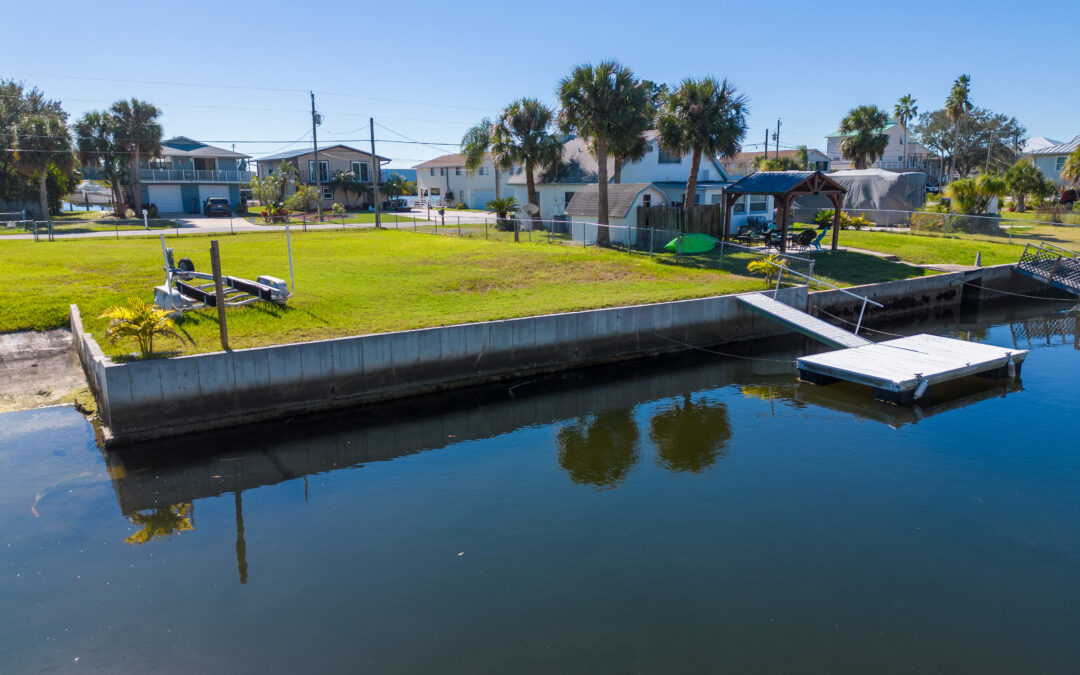Water infiltration at a bulkhead or seawall can lead to significant structural damage over time. It occurs when water seeps through the structure instead of being held back. The water seepage can lead to gradual deterioration, causing cracks, discoloration, and, in the worst scenarios, structural failure.
Damage from water penetration not only poses potential safety hazards but can also significantly depreciate the value of the property. Learn the signs of water infiltration at your bulkhead or seawall so that you can protect your waterfront property.
Presence of Erosion
Erosion around a seawall or bulkhead is often the first sign of water permeation. You may notice this as soil loss around the structure, particularly if it seems more severe near the seawall or bulkhead than in other areas. The erosion can begin subtly but may worsen over time if the cause is not addressed.
The impact of erosion can be major, potentially destabilizing the bulkhead or seawall enough to cause it to fail. Regularly inspect the soil surrounding the structure, and if you notice erosion, consult with a contractor. They can reinforce the structure and suggest preventative measures to mitigate future water infiltration.
Washouts
Washouts occur when the pressure of infiltrating water exceeds the resistance of the structure, washing away the soil behind the structure. This often results in noticeable gaps or holes in the area surrounding the bulkhead or seawall. In severe cases, washouts can lead to the sinking or collapse of parts of the structure due to the loss of supportive ground.
It’s important to address washouts promptly as they can rapidly escalate, causing extensive damage to the structure and posing significant safety risks. One possible method of waterfront bulkhead repair is stabilization with expanding polyurethane foam. The foam will stop water infiltration, fill voids in the soil, and stabilize the soil to prevent washouts.
Discoloration and Staining
A less obvious sign of water infiltration is discoloration and staining on the bulkhead or seawall. This often occurs due to water seeping through cracks and other imperfections in the structure. The stains can vary in color, ranging from dark patches to rusty discoloration.
Over time, these discolorations can become more pronounced and cover larger areas of the structure. Not only are they unattractive, but they also serve as an early warning sign of a potential structural integrity issue.
Cracks and Breaks
Cracks and breaks are often a direct result of water infiltration and are among the most serious signs of potential structural failure in bulkheads and seawalls. These fissures can look like thin lines initially but can widen and deepen over time, becoming more noticeable.
The presence of cracks and breaks indicates that the structural integrity of the bulkhead or seawall may be compromised, potentially threatening the stability of the nearby land and structures. Depending on the severity and location of the damage, solutions include patching up minor cracks and reinforcing the structure, improving drainage systems, applying expanding polymer, or in severe cases, undertaking a complete rebuild.
Maintaining the integrity of your bulkhead or seawall is crucial in preserving the value and safety of your property. Early detection of signs such as erosion, washouts, discoloration, and cracks can prevent catastrophic damage. For seawall or bulkhead repair, URETEK ICR Gulf Coast uses expanding polymer foam that can stop soil loss, stabilize the structure, and prevent washout and soil voids. Call us today for expert repair solutions and to protect your property from further damage.

